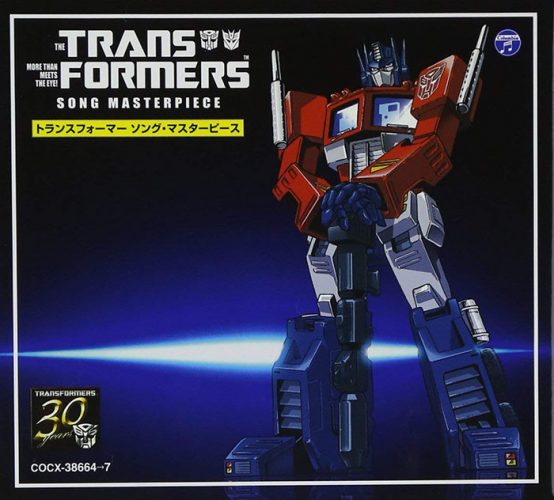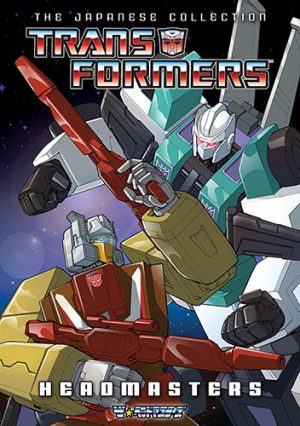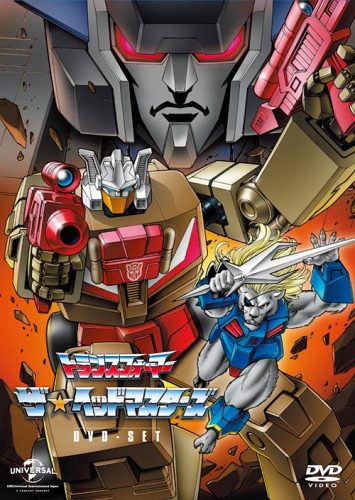
-Head On for Season 4 of G1-
- Episodes : 35
- Genre : Adventure, Mecha, Sci-Fi, Shounen
- Airing Date : July 3, 1987 – March 28, 1988
- Studios : Toei
Contains Spoilers
Transformers: The Headmasters Introduction
While the original G1 Transformers ended in 1987 in the US, it still exclusively continued in Japan. As opposed to broadcasting the 4-part Rebirth mini-series of the US Transformers series, Toei and Takara decided to continue with a fresh series, Headmasters. While the Headmasters were briefly in the US series, they became the central characters in this respective series. With the Transformers, you have the Constructicons, the Dinobots, the Aerialbots, and the Insecticons. What makes the Headmasters unique compared to these various subunits of the Transformers is that the Headmasters are human size, but can transform into a head that can connect to a transtector, a body which is the same size of a regular Transformer. With the Cybertrons (or the Autobots), Fortress Maximum assumes leadership while MegaZarak becomes the new leader of the Destrons (or the Decepticons in the US version).
What We Liked About Transformers: The Headmasters
For those that wanted more than what the original series had to offer, then Headmasters is truly more than meets the eye. While the Headmasters appropriately dominate this edition of Transformers, many OG G1 characters continue to be mainstays on both sides of the conflict. Some retain their identities from the original series, while there are others that come back with some major upgrades. So if you want to see a Japanese take of Transformers without its American influence from Marvel or Hasbro, Headmasters will expand your horizons as a great supplement to the original G1.

1. Hironobu Kageyama
If you’re a hardcore fan of Dragon Ball Z, then you have to know who Hironobu Kageyama is. While he is largely famous for doing both opening themes to that series, he happened to contribute to the soundtrack of Headmasters as well. The opening song is more in-tune with the the second opening theme to Saint Seiya with its intensity, while the ending theme captures more of his campy style akin to Dragon Ball Z’s songs. He also contributed to a good number of insert songs and we promise you’ll get a kick out of the song he made for the Destrons.
2. New Characters
The Headmasters take the forefront of the series and they offer something fresh compared to the original cast. The concept of the Headmasters is largely explored throughout the series. Fortress Maximus and Magazarak are great leaders for the Cybertrons and Destrons and share a fresh rivalry if you don’t want to watch Megatron and Prime anymore. Chromedome, the sub-commander of the Cybertrons, plays a very huge role in making you love the Headmasters and the Destrons have some unique characters that are triple changers such as Apeface and Snapdragon.
3. Old characters with some new designs
Though Convoy doesn’t get to come back this time, very early in the series Soundwave and Broadcast (or Blaster) kill each other in battle, but are respectively rebuilt as Soundblaster and Twincast and become stronger than ever! However, some old characters retrain their roles and designs such as Cha (Kup), Arcee, and Sixshot -a six changer who has a strong presence in this series. Plus, some human characters such as Daniel and Spike still have a huge presence in Headmasters.
1. Convoy dies again
Just like in your typical Marvel Comic (where death and rebirth are practically a revolving door), though Convoy, or Optimus Prime, died in the movie only to come back the following year, he falls in battle once again. His death isn’t as really as dramatic as the one he had in the movie and once again just feels like a weaker excuse to tell audiences that his toy will no longer be on sale or in production anymore.
2. Weak voice acting
For those that grew up with the original G1, you’re pretty much accustomed to the voices of Peter Cullen, Frank Welker, Chris Latta and Casey Kasem playing your favorite characters. As for the Japanese cast, despite the big names of Tesshou Genda (as Convoy/Optimus Prime) and Seizou Katou (as Galvatron) being in this series, they don’t come across as charismatic as their American counterparts. Plus, the Japanese edition doesn’t modulate/auto tune a majority of the characters’ voices like the US does to make you feel like you’re listening to a robot talk. However, we promise you’ll love Banjou Ginga as the voice of Megazarak.
Final Thoughts

While this is a Japanese continuation of G1 Transformers, watching the first series is by no means a pre-requisite despite largely appealing to long time fans. Since it mostly focuses on the new characters, you can watch this like it’s an entirely separate series. While hardcore fans will miss Optimus Prime and Megatron/Galvatron, sometimes you need to watch new fights, too. If the Japanese sound department bothered modulating the voices, it’d feel more natural when it comes to robots talking. It just sounds weird hearing robots talking without autotune-like voices. Other than that, there are no severe flaws that are likely to turn you off from this series.

